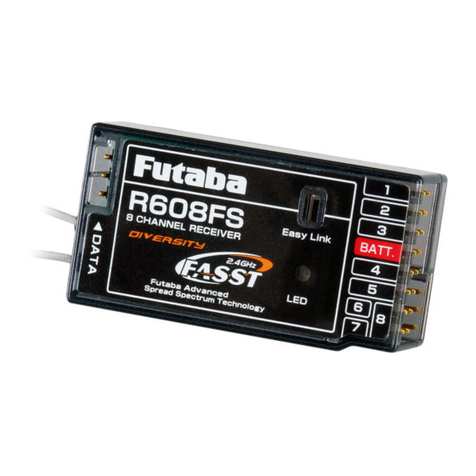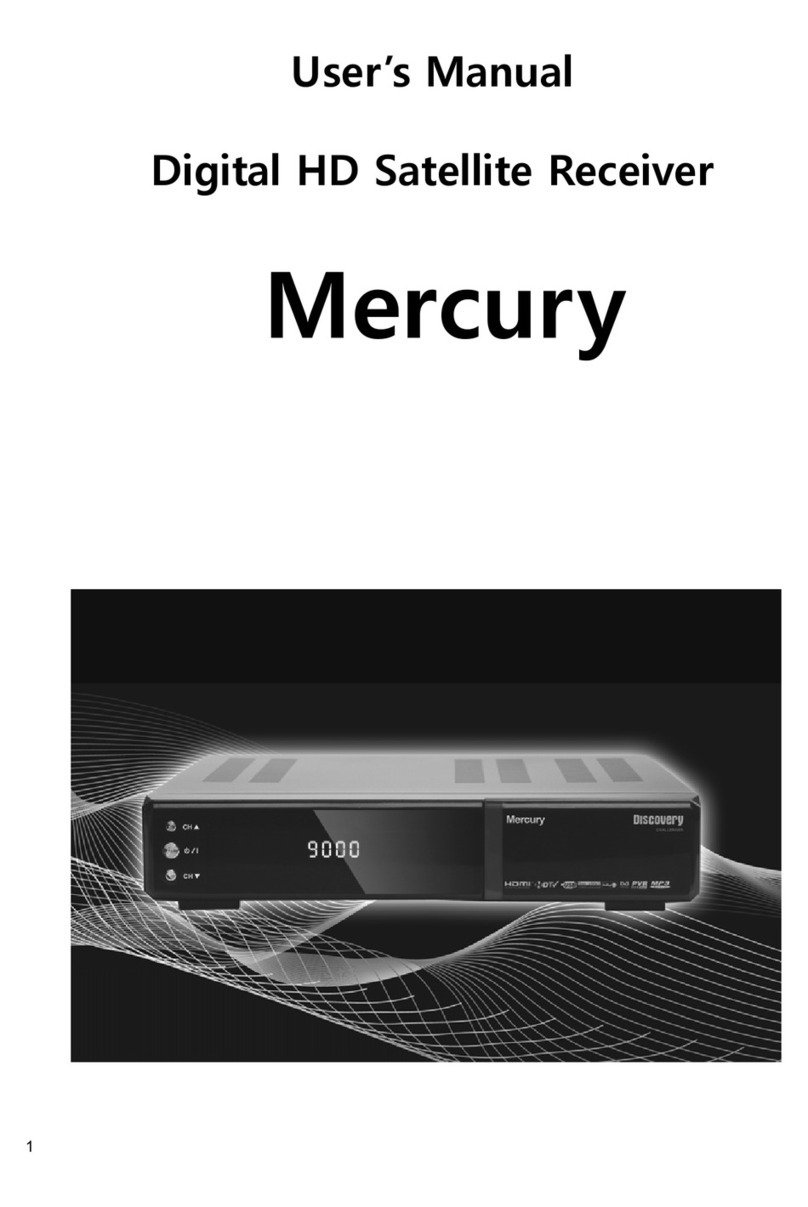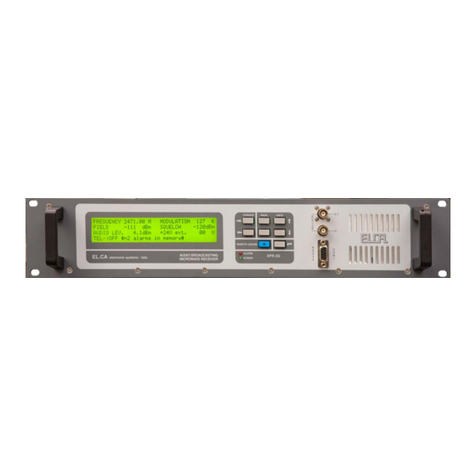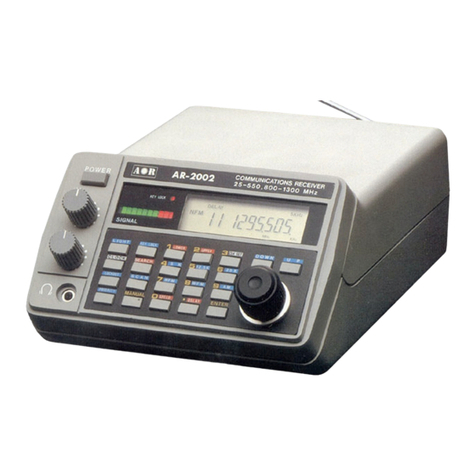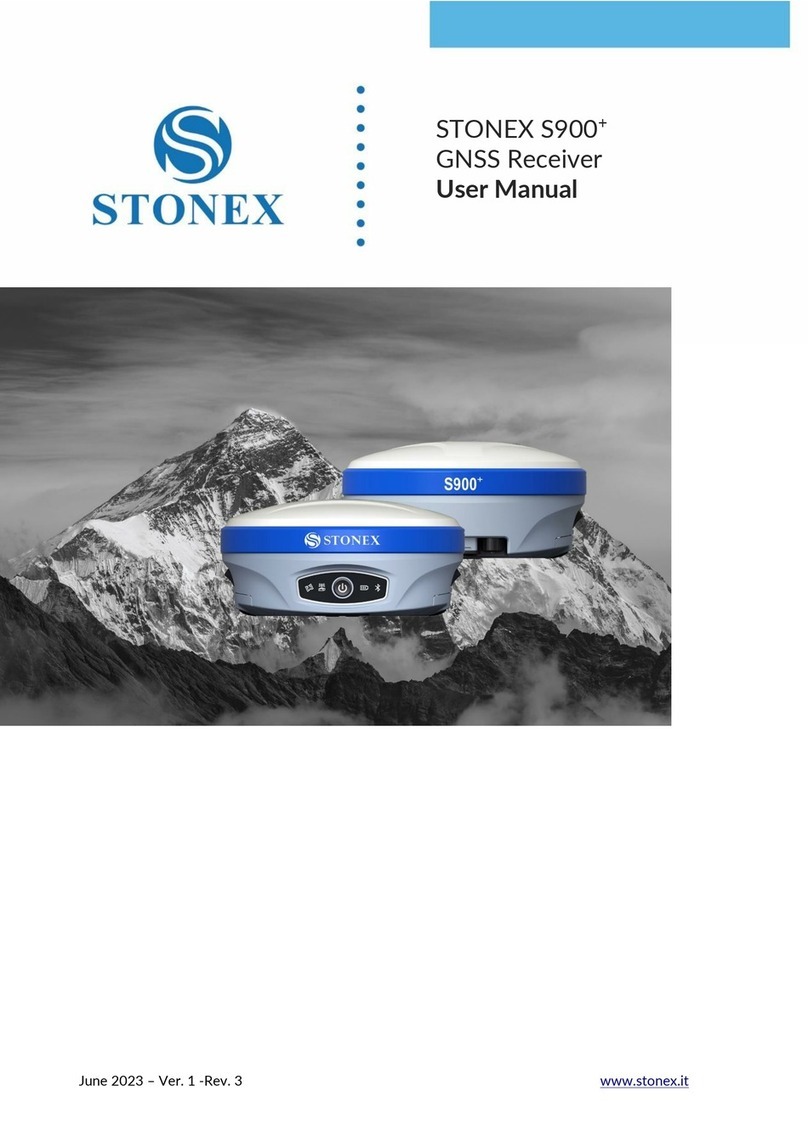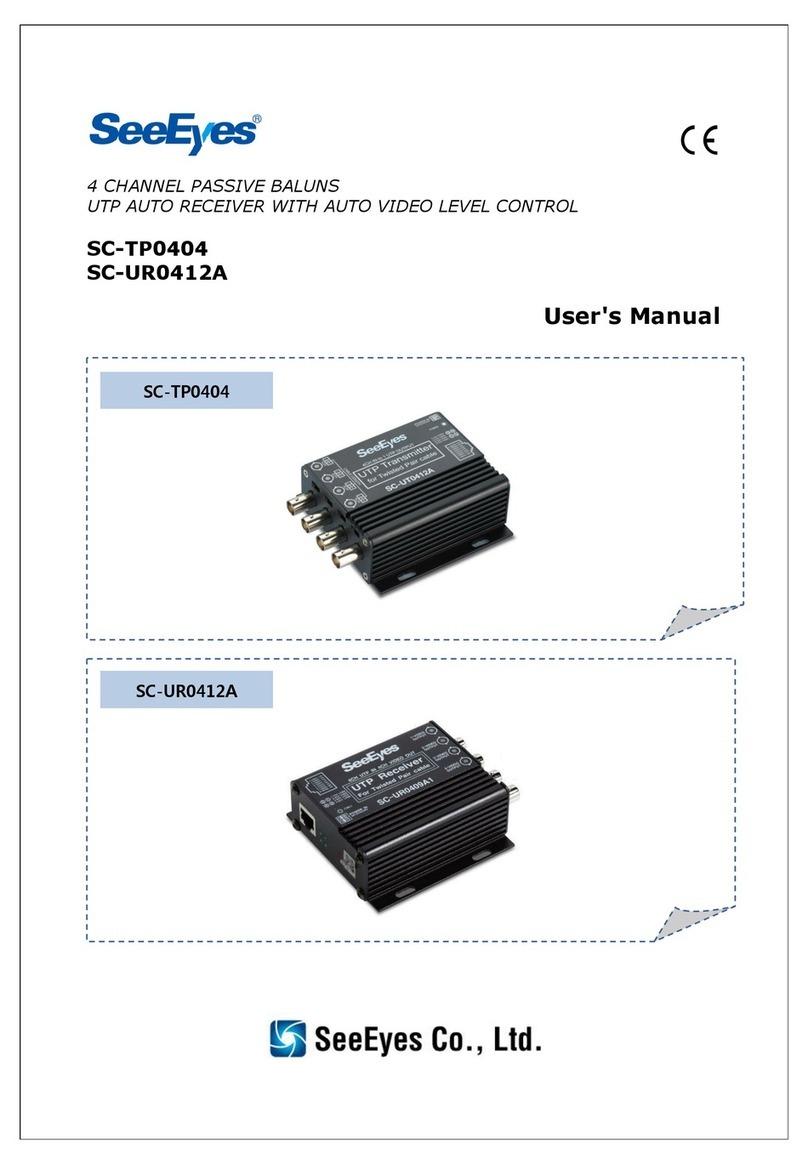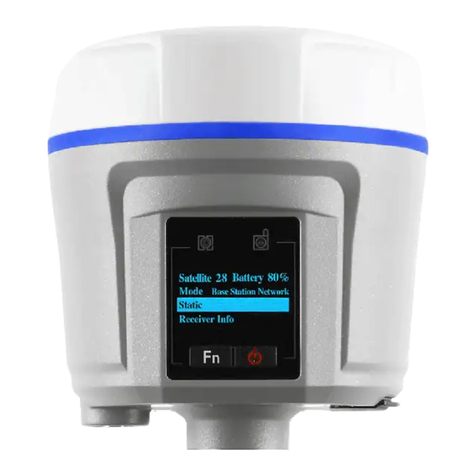SSK SSK-50 User manual

Operations/Safety Manual
SSK - 50
Read the instructions and warnings
in the manual CAREFULLY
BEFORE using the firearm.

This booklet is for use with the SSK-50 Receiver
This booklet contains information that is essential to the safe use and maintenance of the SSK-50
Receiver. You must read this material in its entirety and fully understand its significance before
you can safely use this firearm. If a Receiver is loaned or sold (by an individual or dealer) this
booklet must accompany the receiver. Replacement booklets are available at no charge from the
SSK Firearms Website (sskfirearms.com) - Part Number (SKU):
M125X
, is available at
:
https://sskfirearms.com/
Important Instructions on the USE and CARE of the:
SSK-50 Receiver
SSK Firearms
1288 Bantam Ridge Road, Wintersville, Ohio 43953
Page 1

Table of Contents
General Rules for Safe Use and Handling of the SSK-50
Pages 4 - 8
Ammunition Pages 9 - 10
Mechanics: Hammer Safety and Firing Pin Selection
Pages 11 - 12
Mechanics: Opening the Action – Familiarization
Pages 13 - 15
Mechanics: Closing the Action - Familiarization
Page 16
Mechanics: Loading and Firing the Firearm
Pages 17 - 18
Mechanics: Re-engaging the Hammer Block Safety
Pages 19-22
Safety Page 23
Changing Barrels
Page 24
Trigger Adjustment
Page 24
Lubrication Page 25
Failure to Fire
Page 26
Service Page 27
Statement of Liability
Page 28
5 – Year Warranty
Page 29
Parts List
Page 30
Page 2

KNOW YOUR FIREARM BEFORE YOU ATTEMPT TO USE IT!
Designed as a Hunting/Sports firearm, the SSK-50 is uniquely different from other firearms. Its single shot,
break open action is relatively simple to understand and safe when the required ingredients of “common
sense” and “safe gun handling” are applied to its use and care.
However, do not assume that a familiarity with other firearms has equipped you with knowledge of “safe gun
handling”. Each gun design is different from another and each functions accordingly. You must read and
un
derstand the contents of this manual prior to use.
All machines be they chain saws, automobiles, lawnmowers, or firearm are built to function as mindless
me
chanical slaves. They serve only as well as your intellect dictates.
Carefully used, your chain saw will cut up a winter’s supply of firewood. Carelessly used, your chain saw will
cut other things with able willingness. A firearm is no different – it is equally nonselective as to target or pur-
pose.
The responsibility for the use of a firearm rests with its user, you must understand the mechanics before you
can shoulder the responsibility for its use. That is what this booklet is all about.
YOU MUST READ THIS MANUAL
BEFORE USING THE SSK-50
Page 3

GENERAL RULES FOR SAFE USE AND HANDLING OF THE SSK-50
1.
If you are unfamiliar with firearms seek professional instruction.
Qualified organizations such as
local gun clubs, the National Rifle Association and State Hunter Safety programs offer courses which teach
safe gun handling and proper hunting procedures. Those who are unfamiliar with firearms should seek guid-
ance from an instructor who is qualified by one of these organizations.
2.
Always point the muzzle of your SSK-50 firearm downrange.
The possibility of accidental discharge
is a constant danger when using a firearm. If the muzzle is pointed downrange, away from yourself, other
people, domestic animals or property, then there can be no injury or damage from an accidental discharge.
3.
Never load your SSK-50 until you are ready to fire it.
If your firearm is not loaded until you are ready
to fire and are directing your full concentration to it and the target, then there can be no accidental dis-
charge of the firearm. Never transport or carry a loaded firearm in vehicle. Never hand a loaded firearm to
another person. Never store a loaded firearm in your home. Never cross a fence, climb a tree, jump a ditch
or engage in any activity which distracts your attention while holding or carrying a loaded firearm. Never
attempt to clean a loaded firearm. Carelessness in observing any of these rules can result in an accidental
discharge which can cause injury or death to yourself or others.
4.
Be physically fit and mentally alert when using your SSK-50.
The use of your SSK-50 involves
forceful physical actions which require strength and concentration. Never use alcoholic beverages or drugs
before shooting or handling your SSK-50. Never use your SSK-50 when you are overly tired. If you use
medication or have medical implants, consult your physician before using your SSK-50.
Page 4

GENERAL RULES FOR SAFE USE AND HANDLING OF THE SSK-50 (Cont)
5.
Know the condition of your SSK-50 before firing.
Be sure the firearm is loaded with ammunition of
the proper caliber. Be sure the breech is securely locked. Be sure the barrel is clear of obstructions (including
excess oil, mud, dirt, snow or any foreign material). Failure to observe this rule may result in damage to the
firearm and injury to the shooter or bystanders.
6.
Be sure of your target.
Never fire your SSK-50 unless there is a back stop behind your target. Never fire
your SSK-50 in the field unless you have a clear view of your target. Never fire at a noise or movement in the
brush. If hunting with others, always know where other members of your party are located. Never fire your
SSK-50 if there is a possibility that a member of your hunting party is down range. Never shoot at flat, hard
surfaces such as rocks or water. A bullet may ricochet off these surfaces causing injury or death.
7.
Respect the SSK-50.
Used properly, your SSK-50 will give you years of pleasure. Used improperly,
carelessly or abused, your SSK-50 is a dangerous instrument and is capable of causing serious injury, death or
property damage. Always treat your SSK-50 as if it were loaded. Do not drop your SSK-50 or allow it to be
struck a blow. Dropping or striking may cause movement of internal parts in such a manner as to cause an
accidental discharge.
8.
Protect your eyes and ears when firing your SSK-50.
Always wear shooting glasses to protect your
eyesight from air borne particles and ear protection to guard against hearing loss due to loud noise when
firing your SSK-50.
Page 5

GENERAL RULES FOR SAFE USE AND HANDLING OF THE SSK-50 (Cont)
1. Note: The SSK-50 is sold as a Frame, Handgun or Rifle. Changes to the configuration of the
SSK-50 receiver or firearm by the end-user, including but not limited to, a butt stock on a pistol,
or a pistol barrel (under 16 inches) on a long gun, may subject the firearm to classification under
the National Firearms Act, which imposes registration, taxes, and other requirements on the
owners of such firearms. It is your responsibility to comply with all Federal, State, and Local
laws and regulations regarding the ownership or possession of a firearm such as the SSK-50 and
any conversions or additions of any aftermarket accessories to your SSK-50.
2. SAFETY IS YOUR NUMBER ONE RESPONSIBILITY
a. At home, in the field, at the range, or anywhere, the first concern of every firearm owner
should be safety. Apply the following safety rules in every situation, with any kind of
forearm. If you feel uncertain about any operational aspects of the firearm, please contact
SSK Firearms, Inc. before proceeding with its operation.
b. If you are unfamiliar with firearms, you should seek professional training before using
your firearm.
c. WARNING: YOU MUST FOLLOW ALL OF THESE SAFETY RULES TO ENSURE THE
SAFE USE OF YOUR FIREARM. THE FAILURE TO FOLLOW THE INSTRUCTIONS
AND WARNINGS IN THIS MANUAL COULD CAUSE SERIOUS PERSONAL INJURY
TO DEATH TO YOU OR OTHERS AND DAMAGE PROPERY.
Page 6

GENERAL RULES FOR SAFE USE AND HANDLING OF THE SSK-50 (Cont)
d. As a firearm owner, you accept a demanding responsibility. How seriously you take this
responsibility can be the difference be the difference between life and death. There is no
excuse for careless or abusive handling of your firearm. At all times handle your firearm
with intense respect for its power and potential danger.
e. NEVER PLACE YOUR FINGER INSIDE THE TRIGGER GUARD OR ON THE TRIGGER
UNLESS YOU INTEND TO FIRE.
f. YOU ARE RESPONSIBLE FOR THE FIREARM AT ALL TIMES.
g. FIREARM SECURITY IS YOUR RESPONSIBILITY
a. You must secure firearms safely from children and/or unauthorized users. Your
firearm should always be kept unloaded and locked when not in use. Never assume
that the use of a lock is sufficient to safely secure your firearm. You must always
evaluate your personal situation and employ the security systems that meet your
needs and prevent children and unauthorized users from gaining access to your
firearm.
h. APPROPRIATE USE FOR YOUR FIREARM MEANS USING YOUR FIREARM FOR LEGAL
PURPOSES.
i. NEVER RELY ON MECHANICAL FEATURES ALONE
j. NEVER USE ALCOHOL OR DRUGS BEFORE OR WHILE SHOOTING
Page 7

k. NEVER ALL A FIREARM TO BE USED BY INDIVIDUALS WHO DO NOT UNDERSTAND
ITS SAFE OPERATION OR HAVE NOT READ THESE FIREARM SAFETY RULES.
l. ALWAYS USE THE CORRECT AMMUNITION FOR YOUR PARTICULAR FIREARM.
m. BE SURE ALL ACCESSORIES, SUCH AS HOLSTERS, GRIPS, SLINGS, SCOPES, AND
OTHER ACCESSORIES ARE COMPATIBLE.
n. NEVER DISASSEMBLE YOUR FIREARM beyond changing the appropriate barrel, and
standard stock components.
o. NEVER MANIPULATE, ADJUST OR CHANGE ANY OF THE INTERNAL COMPONENTS
OF THE FIREARM UNLESS SPECIFICALLY INSTRUCTED TO DO SO IN THIS MANUAL.
p. NEVER ALLOW ANY ALTERCATIONS OR REPLACEMENT OF PARTS IN YOUR SSK-50
FIREARM UNLESS PERFORMED BY A QUALIFIED GUNSMITH.
q. ALWAYS USE THE LOCK PROVIDED BY SSK FIREARMS TO SECURE YOUR FIREARM.
SSK Firearms provides a lock for your convenience along with an instruction sheet on the
proper use of the lock. There are other alternative locks and safe storage containers available
in the marketplace which may also be appropriate for your particular needs.
r. WARNING: NEVER LOCK A LOADED FIREARM AND NEVER LOAD A LOCKED
FIREARM.
Page 8

AMMUNITION
Standard Factory Loaded Cartridges
The SSK-50 design provides for the use of interchangeable barrels which are chambered for a variety of factory
loaded cartridges. The proper cartridge for each barrel is clearly marked by its standard industry designation on
the top left side of each barrel. Barrels chambered for standard cartridges should be used with high quality com-
mercially manufactured ammunition with packaging and head stamp designation that corresponds exactly to the
barrel marking. If you have any questions concerning the proper ammunition of your SSK-50 Receiver, contact
SSK Firearms.
Custom/Wildcat Cartridges
Many SSK-50 barrels are available from several manufactures in custom cartridge chambers for those qualified
people who are totally experienced in reloading procedures. The novice should not attempt to use these car-
tridges until he or she has developed the required background and knowledge. Handload custom ammunition
only in accordance with the standards and guidelines set by component and reloading tool manufacturers. These
companies publish reloading manuals which must be read, understood, and adhered to. Use only that data
which is published by a reliable source and thoroughly tested by the component or tool manufacturer. Never
exceed the loads listed for a particular powder, bullet and case combination and never substitute components for
those listed. When using listed data, bear in mind that production changes affecting ballistic performance can
occur at any time and without our knowledge. If there is ever a question as to the correctness of a component,
write to its manufacturer. Failure to follow proper procedure can result in serious injury and/or death to yourself
or others.
If you are unable to obtain reliable information with respect to procedure or standards for reloading,
contact SSK Firearms.
Page 9

C
ustom Alterations & Conversions
SSK-50 Receiver or SSK-50 accessory barrels which are subjected to custom alteration or conversion other
than those performed by SSK Firearms are not covered by our warranty.
SSK-50 Firearms does not endorse
or recommend any type of custom alteration other than those performed by the SSK Firearms. Responsibility
for other conversions rests solely with the gunsmith performing the conversion. If the work is done improp-
erly or without proper judgement the firearm can rupture or malfunction causing injury or death to the shoot-
er or bystander.
Page 10

MECHANICS: HAMMER SAFETY AND FIRING PIN SELECTION
Your SSK-50 firearm is designed with two firing pins which accommodate either rim or center fire cartridges
and allows for the interchangeability of barrels. These firing pins are located in the receiver bridge forward
of the hammer. The upper firing pin is used for rimfire cartridges while the lower pin is used for centerfire
cartridges.
The manual firing pin selector is located on the top of the hammer (see Photo 1 Page 9). The selector activates
the unique rim and center fire ignition systems.
When the selector is moved to
Position 1
(see Photo 2 Page
9) a hammer nose aligns with the rimfire (top) firing pin and readies it for firing.
Position 2
is a safety posi-
tion.
When the selector is moved to Position 2
(see Photo 3 Page 9)
both firing pins are disarmed and
the red dot is covered.
When the selector is moved to
Position 3
(see Photo 4 page 9) a hammer nose aligns
with the centerfire (bottom) firing pin and readies it for firing.
Note that when the selector is in Position 1 or Position 3 the red dot is exposed indicating that the
firing pins are armed and that the pistol will discharge if the hammer falls with a
round in the chamber.
Study the photos and commit them to memory. Bear in mind that only Position 2 is the
safety position.
Page 11

Manual Firing Pin Selector
Photo 1
Selector
Photo 2
Position 1
Photo 3
Position 2
Photo 4
Position 3
ARMED SAFE RED DOT ARMED
RIMFIRE NOT VISIBLE CENTERFIRE
Page 12

MECHANICS: OPENING THE ACTION – FAMILIARIZATION
1)
With the firearm pointed in a safe direction and fingers away from the trigger, rotate the manual firing pin
selector to Position 2, the safety position as shown in Photo 5 (Page 12).
2)
With the firearm pointed in a safe direction and fingers away from the trigger, support the firearm at its
balance point as pictured in
Photo 6 (Page 12)
. Bear in mind that the SSK-50 is a hunting and target
firearm designed for sporting use only. Its proper operation requires the same “two handed” care that would
normally be given a quality break open type shotgun.
By design, the SSK-50 Receiver has no importance as
a combat weapon. Such applications as fast drawing, speed shooting, one handed loading or “snap shooting”
are dangerous and should never be attempted with an SSK-50! It is just not that kind of a firearm. The only
proper application for an SSK-50 is hunting, target or sport shooting, so consequently its user has all the time
in the world to operate this firearm correctly and safely.
3)
Use the trigger finger of your (right or left) hand to open the action. Place the finger low on the trigger
guard “spur” to obtain maximum leverage and give it a fast-sharp pull as shown in
Photo 7 (Page 12).
Pull
this spur to the rear and upwards at the same time. The trigger guard must be pulled fully to the rear allow-
ing the action to open. The action will open more easily if the forend/barrel is not pulled downward while
moving the trigger guard rearward.
Page 13

MECHANICS: OPENING THE ACTION – FAMILIARIZATION (Continued)
DISARMED
RED DOT NOT
VISIBLE
Page 14
PHOTO 5 PHOTO 6 PHOTO 7
POSITION 2

MECHANICS: OPENING THE ACTION – FAMILIARIZATION (Continued)
It is important to understand the mechanics of the opening operation to utilize the firearm safely. In Step 1,
moving the manual firing pin selector to Position 2, the
primary safety
, rotates the two hammer nose pins
(one rimfire, on centerfire), away from any potential contact point with either firing pin, rendering the fire-
arm safe and incapable of discharge.
In Step 3, breaking open the action, the extractor moves to the rearward position extracting the case or
unfired round from the chamber so it may be manually removed. Simultaneously, the trigger and striker
re-engage and the
secondary safety
, the hammer block, is moved to the safety position preventing forward
movement of the hammer to contact the firing pins.
Page 15

MECHANICS: CLOSING THE ACTION-FAMILIARIZATION
1)
With the firearm pointed in a safe direction, fingers away from the trigger, and the action open, verify the
manual firing pin selector, the
primary safety
, is in Position 2, the safe position.
2)
Grasp the forend and with a firm and swift upward motion, close the action.
Repeat the steps of opening and closing the action
without placing a round in the chamber
until you un-
derstand the mechanics and are completely comfortable with the operation. At no time have a live round in
the chamber. A key understanding is the activation of the secondary safety which is engaged upon
opening
,
not closing of the action. This is very important to understand. The secondary safety adds an additional safe-
ty mechanism, the hammer block, upon opening the action.
Page 16

MECHANICS: LOADING AND FIRING THE FIREARM
DON’T LOAD AND FIRE YOUR SSK-50 UNTIL YOU HAVE READ AND UNDERSTAND THIS MANUAL.
1)
With the firearm pointed in a safe direction and fingers away from the trigger, rotate the manual firing pin
selector to Position 2, the safety position as shown in Photo 5 (Page 14).
2)
With the firearm pointed in a safe direction and fingers away from the trigger, support the firearm at its
bal
ance point as pictured in Photo 6 (Page 14).
3)
Use the trigger finger of your (right or left) hand to open the action. Place the finger low on the trigger
guard “spur” to obtain maximum leverage and give it a fast-sharp pull as shown in
Photo 7 (Page 14)
. Pull
this spur to the rear and upwards at the same time.
4)
Tilt the firearm so the muzzle is inclined downward and place a cartridge (matching the barrel chamber
designation) into the chamber ensuring the cartridge head engages the extractor.
Page 17

MECHANICS: LOADING AND FIRING THE FIREARM (Continued)
5)
Grasp the forend and with a firm and swift upward motion, close the action.
If the action does not close smoothly, do not force it closed on a live round. Remove the live round from the
chamber and inspect the cartridge and chamber. If you are unable to recognize and correct the problem, have
the firearm examined by a qualified gunsmith. Forcing the action closed on a live round may cause accidental
discharge. An accidental discharge may cause injury or death.
6)
The firearm is now ready to fire. With all the conditions of firing a safe shot satisfied, cock the hammer,
move the firing pin selector to the appropriate position (rimfire or centerfire) and squeeze the trigger.
7)
After firing, place the firing pin selector, the primary safety, to Position 2, the safe position.
Releasing the trigger puts several mechanical processes in motion. As the trigger is squeezed, the striker
which is in contact with the trigger and under spring pressure, is released and rotates backwards releasing the
sear which in turn allows the secondary safety, the hammer block, to fall and simultaneously release the ham-
mer. The hammer falls and the selected hammer nose pin strikes the appropriate firing pin which the strikes
the primer or rimfire rim.
It is important here to understand that as the trigger is depressed, the hammer block is released.
Page 18

MECHANICS: RE-ENGAGING THE HAMMER BLOCK IF THE HAMMER IS COCKED, BUT
THE TRIGGER NOT PULLED
The SSK-50 is equipped with two safety devices which functions independently of each other.
1)
The primary safety is the firing pin selector. When the selector is placed in Position 2, the hammer nose
pins cannot contact the firing pins.
2)
The secondary safety is the internal hammer block. When the SSK-50 action is broken open properly, as
explained previously, the hammer block moves into a position between the hammer and the frame. In this po-
sition the hammer cannot move forward.
Study the
Photo 8 (Page 20)
. Note that when the hammer block is in the up position there is a visible space
between the face of the hammer and the firing pins. Equally, when the External Manual Firing Pin Selector is
set in safety Position 2 (as it should be), both hammer noses (rimfire and centerfire) are out of alignment with
the firing pins.
The hammer block will remain in the up (safety) position until trigger-striker engagement is released.
There will be times when the shooter cocks the hammer but decides not to fire the gun. There are only two
methods to “de-cock” the firearm and return to a safe condition.
Page 19
Table of contents
Popular Receiver manuals by other brands
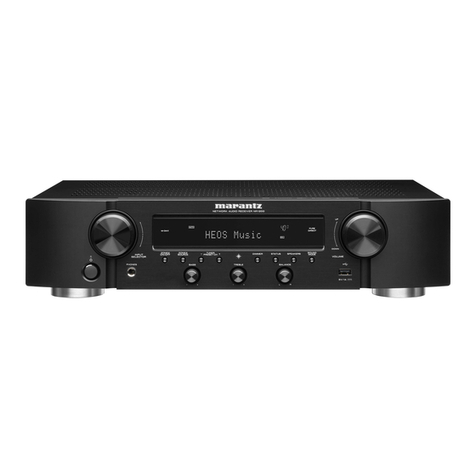
Marantz
Marantz NR1200 Service manual
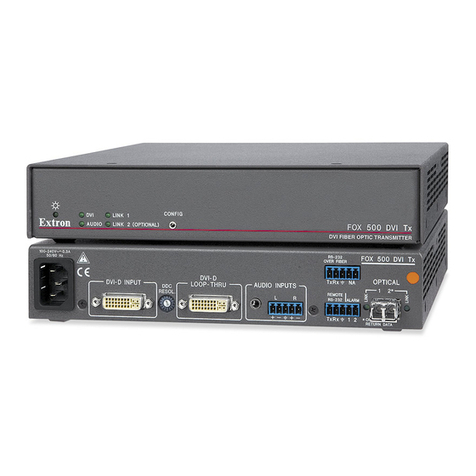
Extron electronics
Extron electronics Fiber Optic Transmitter-Receiver Pair FOX 500 DVI... Specifications

Dish TV
Dish TV S9000 Operation manual
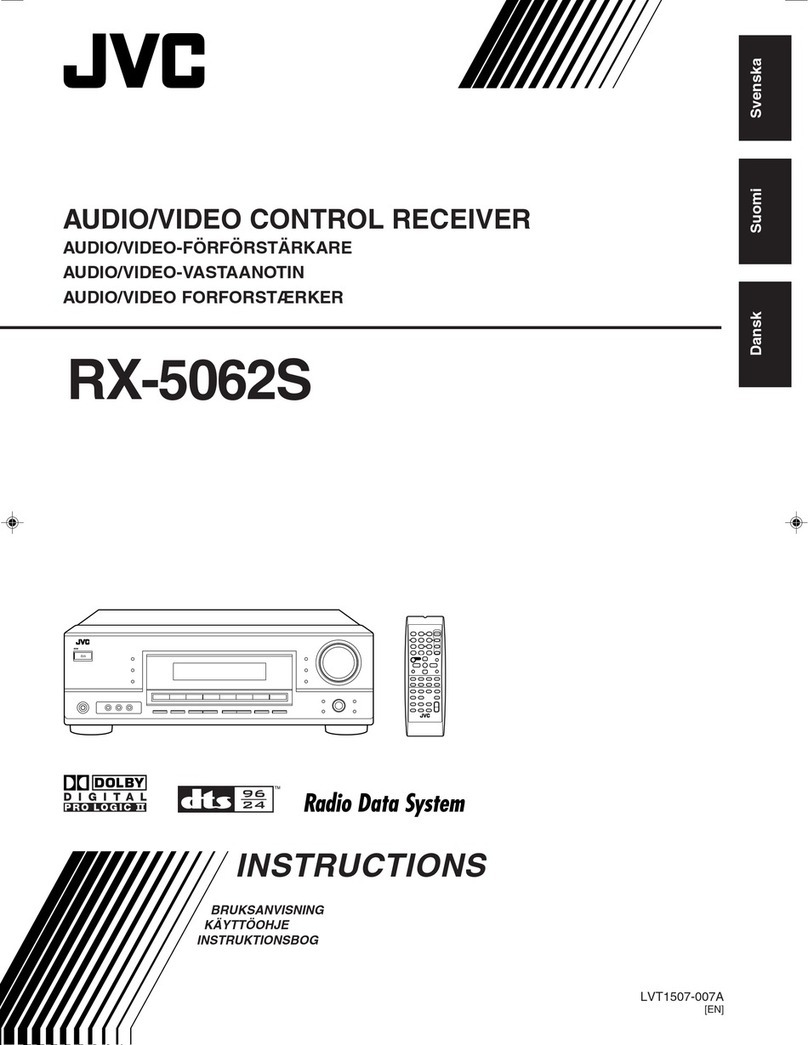
JVC
JVC Audio/Video Control Receiver RX-5060S instructions
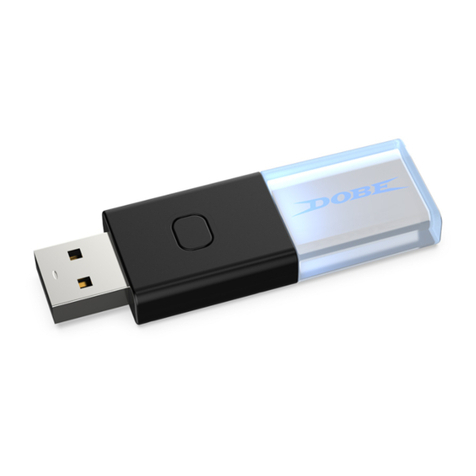
DOBE
DOBE TY-1803 user manual
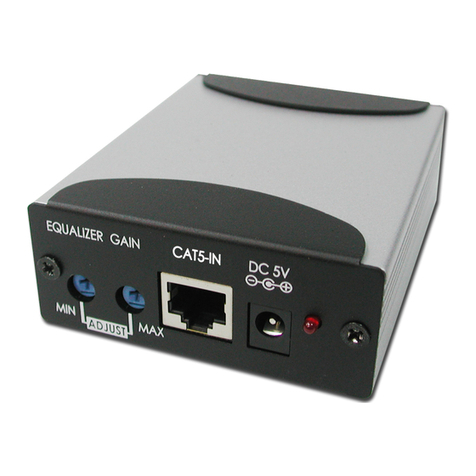
Cypress
Cypress CA-COMPAT Operation manual
